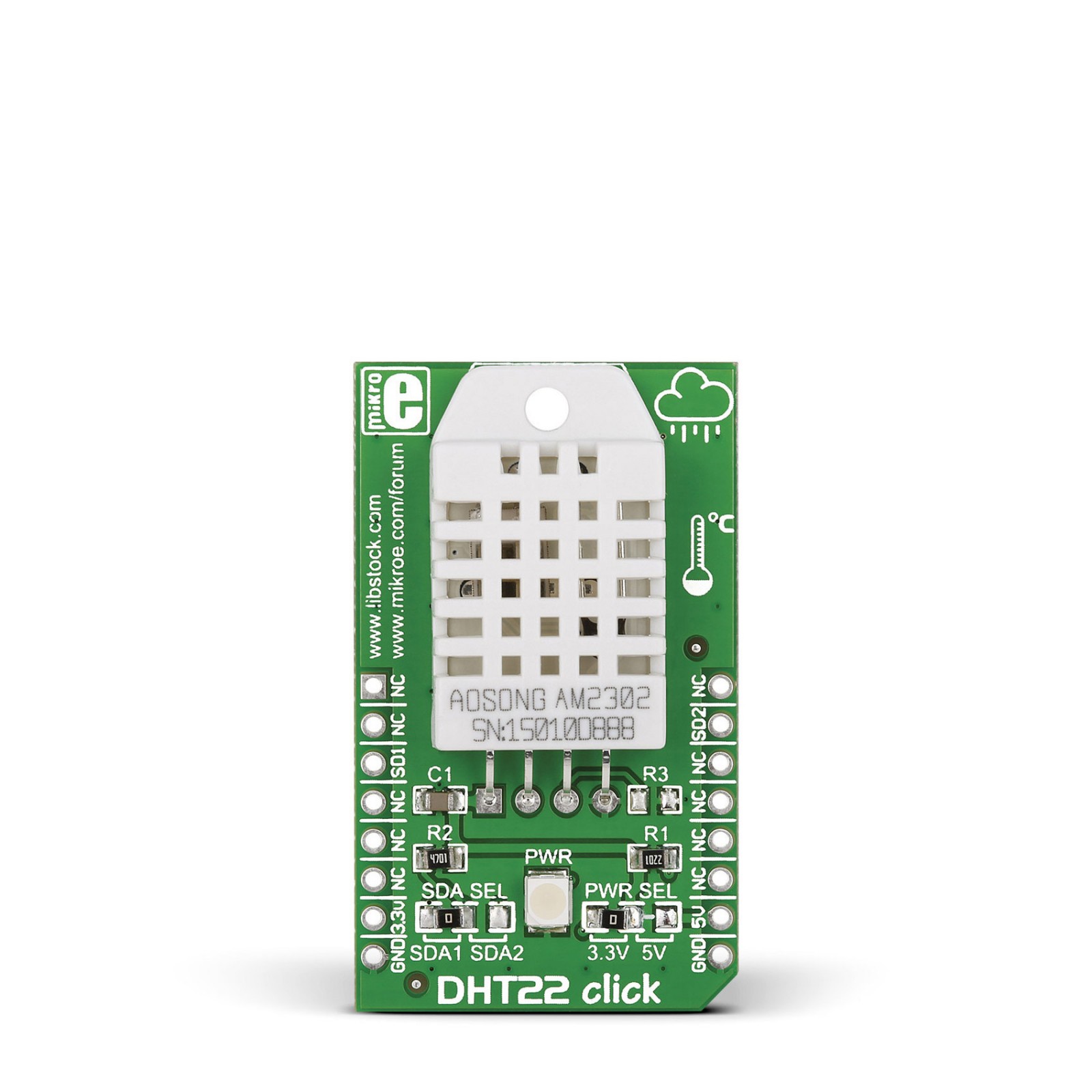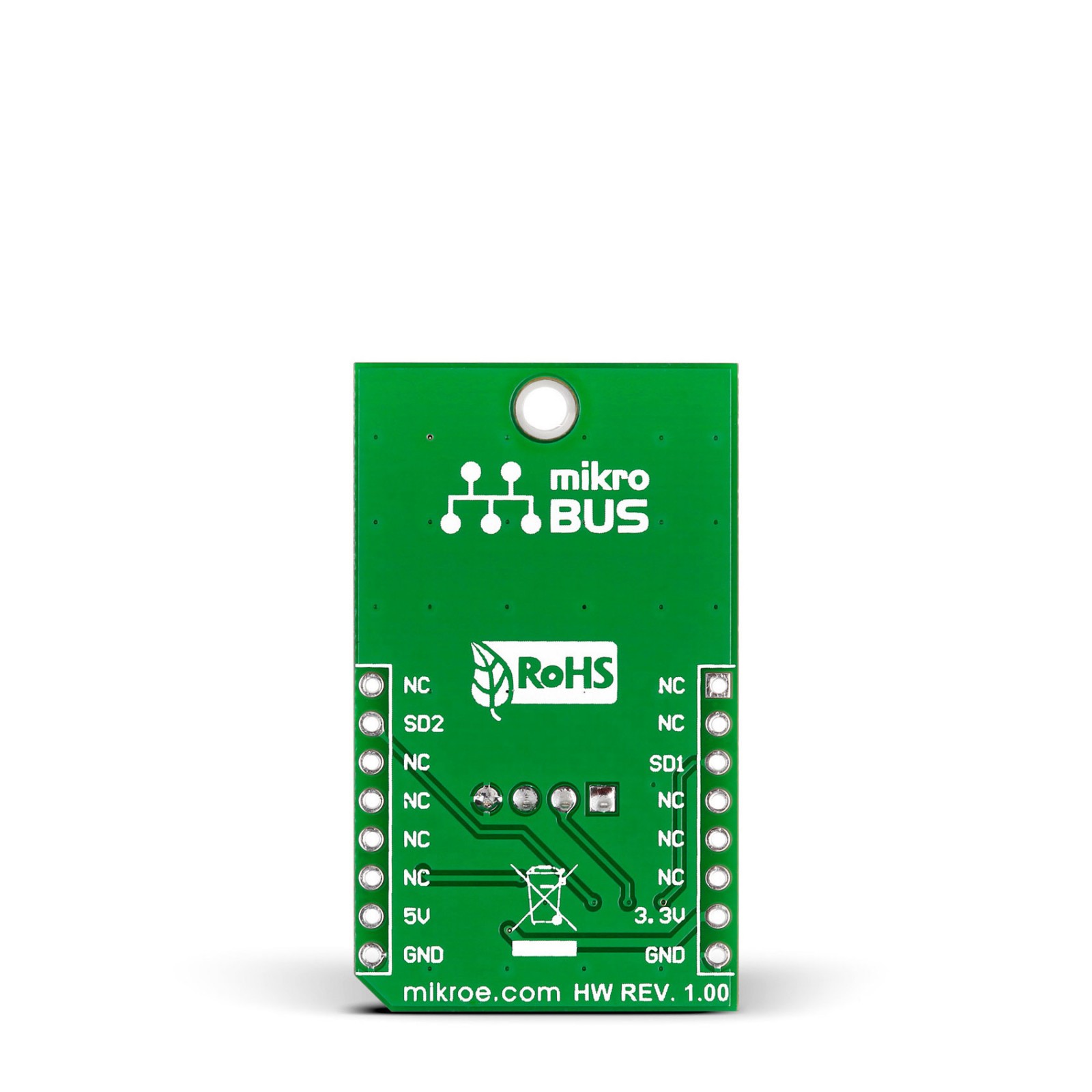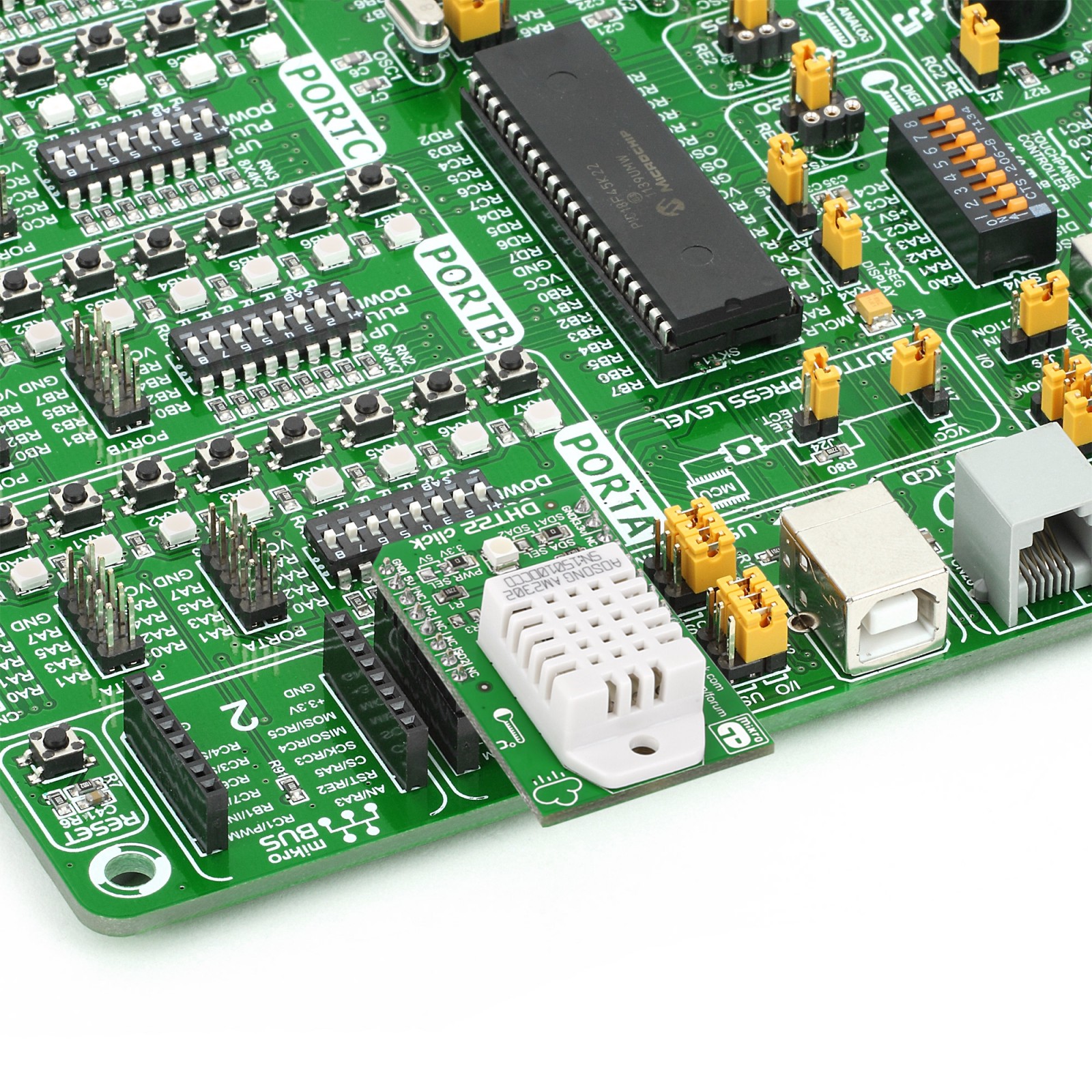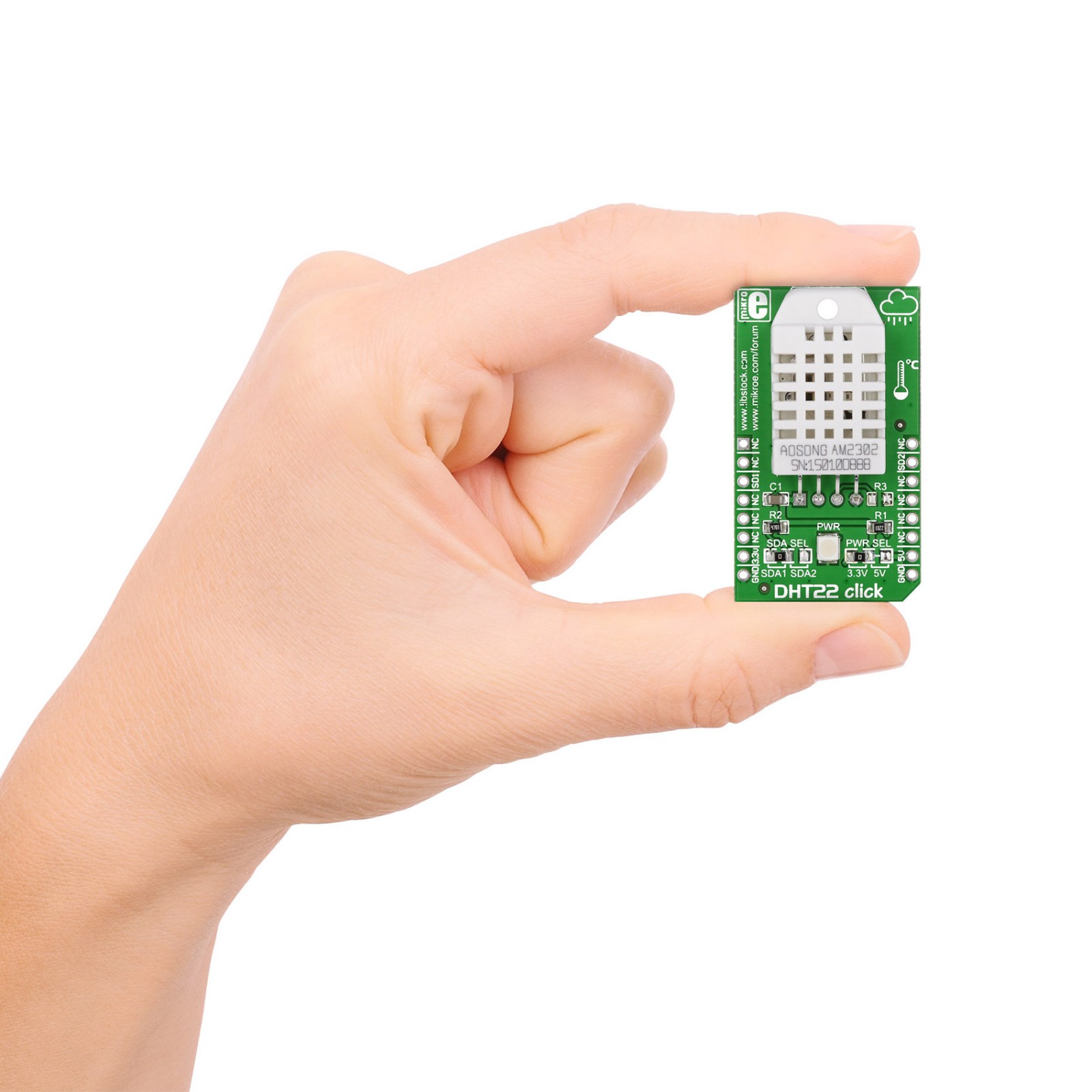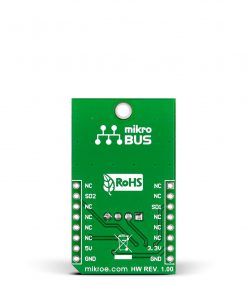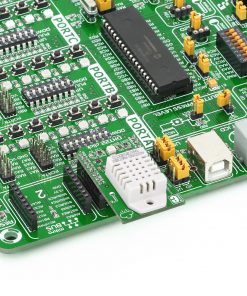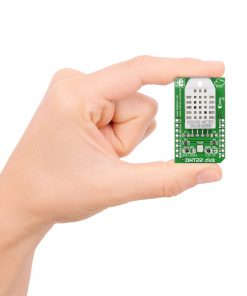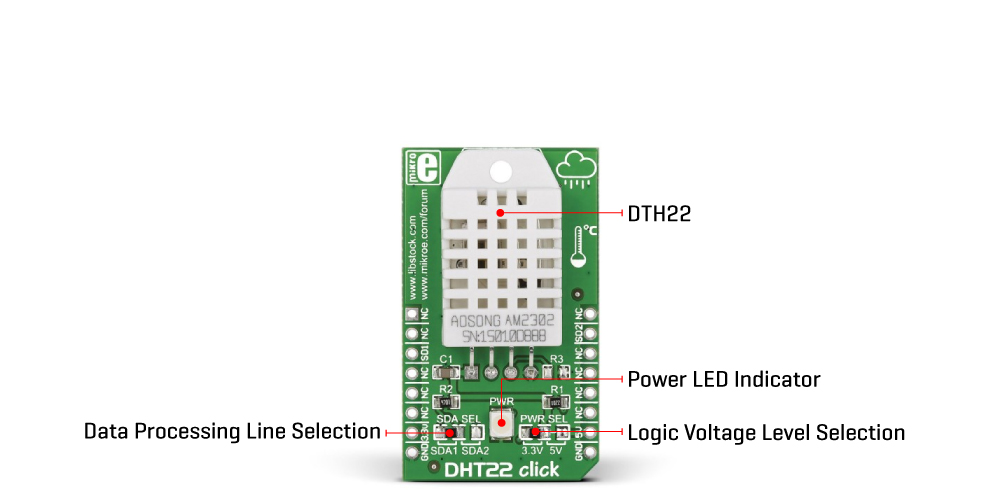DHT22 Click is a compact add-on board providing a humidity and temperature sensing solution. This board features Aosong Electronics’s DHT22, a capacitive humidity sensing digital temperature and humidity module providing high reliability and excellent long-term stability. The DHT22 is characterized by its high accuracy (±2-5% RH and ±0.5°C over a wide operating temperature and humidity range) and high resolution providing 16-bit data to the host controller through a chosen serial data line. This Click board™ is suitable for various temperature and humidity-related applications such as HVAC systems, testing/inspection equipment, consumer goods, automatic control, data loggers, home appliances, and many more.
DHT22 Click is supported by a mikroSDK compliant library, which includes functions that simplify software development. This Click board™ comes as a fully tested product, ready to be used on a system equipped with the mikroBUS™ socket.
 MPU 9DOF Click
1 × R540.00
MPU 9DOF Click
1 × R540.00  GSM-GPS Click
1 × R1,300.00
GSM-GPS Click
1 × R1,300.00  LPG Click
1 × R330.00
LPG Click
1 × R330.00  RTC Click
1 × R385.00
RTC Click
1 × R385.00  DIGI POT Click
1 × R370.00
DIGI POT Click
1 × R370.00 
